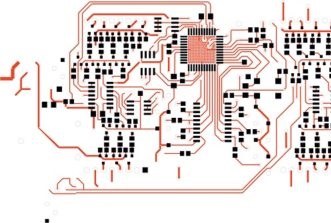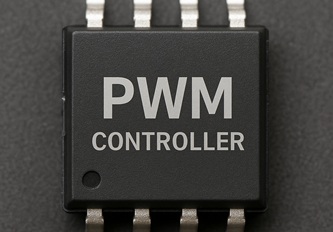The Ultimate Guide to Radar Sensor
02/09/2021, hardwarebee
A sensor is a device that monitors and responds to environmental input. Light, temperature, movement, humidity, stress, or any other environmental factors could constitute the detailed instruction. The result is typically data which is translated into a human-readable format at the measurement point or transferred across a link for interpretation or combination of several sensors. Sensors have evolved into a necessary part of modern living. You’re almost probably using an optical sensor mouse if you’re viewing this on a laptop. Touch sensors are now used every time you adjust the screen on a mobile.

Figure 1: A Few Types of Sensors
Classification of Sensors
- Active and Passive Sensors
- Analog and Digital Sensors
Active Sensors
Active sensors are those using an external operational amplifier to generate an output signal. The physical properties of the sensors alter based on the operation and environmental influences. As a consequence, it’s sometimes defined as self-Sensors.
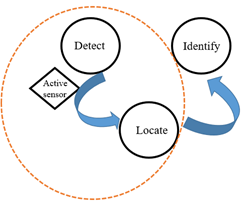
Figure 2: Active Sensors Architecture
Passive Sensors
Passive sensors are those that produce an output without the usage of an external source of excitation. They do not need any further stimulus or voltage.
A thermometer, for example, is used to provide a battery voltage that is proportional to the quantity of heat. An alternating voltage is not required.
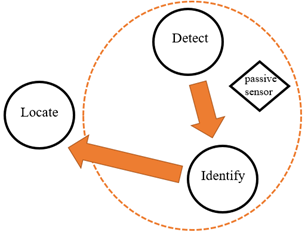
Figure 3: Passive Sensor Architecture
Analog Sensors
Analog sensors produce a constant signal with only an analog result that is proportional to time. The analogue output is proportional to the amplitude or measurement provided by the system. The output is typically analogue voltage or current in the range of 0 to 5 V. Temperature, tension, temperature, movement, and other physical properties are instances of signals.
Applications include accelerometers, speed sensors, pressure sensors, light sensors, and thermometer monitors.
The Future of Sensor Technology
Sensors will continue to grow into every part of our life as technology advances. Sensors will be used by engineers and scientists all around the world to improve transport, surgical treatments, nanomaterials, mobile devices, mixed reality, and artificial intelligence (AI). Future sensors will become more intelligent and precise in their measurements. Within operating model, sensor technology is the bedrock. It will be incredibly difficult for a (R&D) Engineer who lacks the necessary sensor understanding to integrate new embedded sensors successfully.
Increase in Smart Sensors
Our need for new information is expanding, and this information can help you make better judgments. Organizations are becoming more efficient and effective when they react quickly. As a result, you accomplish so much with so little effort. We are continually looking for methods to improve our productivity. Previously, we focused on cost savings rather than measurement. This is now conceivable thanks to the shift from a world dominated by physical principles to a digital world dominated by sensor technology. As a result, we have come to expect much from ourselves and our computers. Developers of sensor technology, vendors, and consumers everyone has various interests to consider: prices, reliability, and lead – times, for instance. For example, this may affect the decision to accept lower quality in exchange for a lower price and the possibility of delivery the next day.
What is a Radar Sensor?
Radar sensors are microwave echo signal converters that convert microwave echo signals to electrical signals. They detect movement using wireless sensing technologies by determining the object’s position, shape, motion characteristics, and trajectory. Unlike many other sensors, radar sensors are unaffected by light or darkness, and since they can detect impediments like glass, they can “see” through walls. Compared to other sensor technologies, such as ultrasound, radar can detect greater distances and is completely safe for humans and animals. One of the most significant advantages of radar sensors over all the other sensors is detecting motion and velocity.
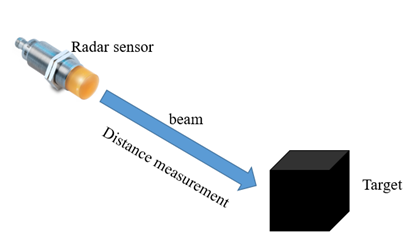
Figure 4: Radar Sensor Working Principle
A radar sensor can calculate an object’s speed and direction by sensing its Doppler effect or shift in wave frequency. While using multi-channel sensors, they may additionally observe the target’s movement from several angles. Complex movements are determined by examining the movement from many perspectives in conjunction with previously obtained measurements. Radar sensors use Frequency Modulated Continuous Wave (FMCW) radar to identify moving or static objects successfully. Lower frequency radars can detect large dielectric structures such as autos, trains, Lorries, and goods, even in bad weather. In most situations, especially outdoors, high frequencies radars can see a broader range of objects and be more resilient than an ultrasonic sensor. Emergency braking on mobile board equipment such as reach racks, forklifts, mine vehicles, and port apparatus such as carriers, operators, and the shipper is also possible with radar-based sensors. Thanks to fast advancements in semiconductor technology, many radars have shrunk in size and electricity consumption in recent years. The observation function of radar is becoming increasingly powerful as millimeter wave, ultra-wideband technology, multiple transmissions, and multiple receptions are paired with revolutionary signal processing technologies and processors with rising computational resources.
Radar Sensor Theory
Radar sensing is a wireless sensor technique that analyses the received target echo features to extract and find the object’s position, shape, motion characteristics, and movement trajectory and infer the properties of the target and the environment. It has a comparable effect to human eyes and ears.
When contrasted to other sensors, the radar sensor has several distinct advantages. When compared to visual sensors, radar, for instance, is unaffected by light and darkness. It can break through barriers and can start protecting personal information. In comparison to ultrasound technology, radar can detect larger distances and does not hurt people or animals. Radar sensing can be used in a variety of applications. Millimeter-wave radar sensors, for instance, are commonly utilized in the field of supported driving in automobiles to identify people and vehicles in front of them and provide collision avoidance alerts. Radar also has many possible uses in homes, building automation, autonomous vehicles, and wearable technology. Radar technology has been used in a variety of smart gadgets and electronic products thanks to the ongoing implementation of novel low-power, small-scale radar sensors.
Radar Sensor Working Principle
FMCW Radar Sensor
According to the law of triangular waves, the broadcast wave is a frequency-modulated continuous-wave that frequency changes over time. The frequency of the radar’s received echo matches the frequency of the emission. Although they are equally triangular waves, there is a timing difference between them. This small time difference can be used to compute the goal distance.
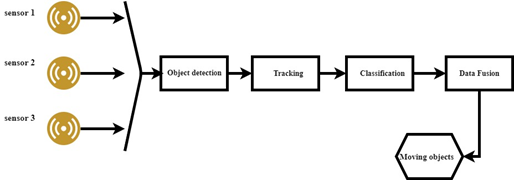
Figure 5: Radar sensor technologies and architecture
CW Doppler Radar Sensor
Doppler radar is a specialized radar that measures the speed of targets at different ranges using the Doppler Effect. It sends a microwave signal to an object. It then analyses the frequency shift of the reflected signal, as well as the differential between both the transmitted and reflected frequencies, to determine the target’s speed compared to the radar.
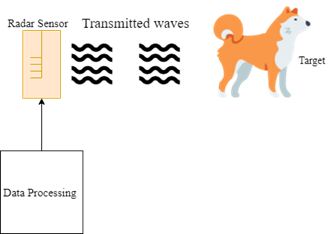
Figure 6: Radar Sensor Target Detection
Radar Sensor Applications
- Military: Missile direction, target observation and interceptions, artillery fire controlling and monitoring, radar measurement, topography tracking, missile fuse, ship guidance, and other applications.
- Security system: Airport intrusion detection, jail perimeter security, interior intrusion alarm, millimeter-wave radar/visual fusion sensing, military area safety, island protection, oil depot security system, power network security system, stereo carport security Detection of life.
- Automotive electronics: Forward collision avoidance, side collision warning, backward obstacle detection, automated cruise control, automated start and stop of cars, blind-spot monitoring, pedestrian detection, and autonomous driving of cars are the most common applications.
- Traffic bayonet radar: Automobile queue length assessment, stop rod detecting, advance identification, stop rod with advance identification.
- Arterial road management: Identification, classification, and scientific techniques of traffic flows; accident surveillance (detection of cars that have slowed or halted); retrograde recognition.
- Law enforcement sensors: Vehicle speed detection at junctions or on roads, crossroads or road red light administration, and mobile law enforcement.
- Radar altimeter: used for standard UAVs, small UAVs, corrected and rotary-wing aircraft, vertical Take-off, and landing planes, and other drones, fully automated landing, absolute height measurement, terrain cautionary tale (terrain reminder and warning), altitude change measuring system (vertical velocity component), terrain modeling.
- Airdrop height sensor: accurate airdrop, absolute rangefinder of the airdrop guiding unit.
- Early warning: Object recognition and tracking in the area in which the drone is operating, recent object detection (position and relative speed), and driver assistance.
The car’s radar sensors serve as the “ears” of autonomous driving. Radar was created with military and avionics applications in mind. In autos, millimeter wave radar is more widely utilized. Millimeter-wave radar has an operating frequency between 30 and 300 GHz and a wavelength between centimeter wave and light wave. As a result, millimeter wave radar has both microwave and photoelectric guidance benefits. It has a lot of penetrating power as well. However, under heavy rain, the performance of millimeter wave radar would be considerably diminished, and millimeter wave is an essential radar frequency band with a lot of interference. The first radar sensor for autos was produced in a research project roughly 40 years ago, however radar sensors were not employed in commercial vehicle projects until 1998. Adaptive cruise control was first implemented using radar sensors. The radar sensor was later upgraded to include collision warning.
Upcoming Radar Sensor Trends
Smarter, more precise, faster, wireless, safer, identity, smaller, more standardized, and so forth. All of these factors are being considered in a number of sensor advancements. In the next years, keeping up with all advances and opportunities as a (R&D) Engineer will become increasingly difficult. You can okay your objectives to your projects by using this list of clever sensor applications.
- Predictive maintenance for components and systems will be more productive, easier, and less expensive, resulting in increased uptime. The repair will be performed using sensors rather than a schedule based upon needs.
- Safety will increase as well because dangerous situations will be more easily anticipated.
- Self-contained sensor technology will be possible. With just an integrated power source, wireless associations have been found over great distances.
- Sensors will self-learn for the rest of their lives, requiring no upkeep, changes, or calibrating.
- Robotic technology’s capabilities and application areas will expand dramatically.
- Sensors will become increasingly important in getting a greater understanding of our actions. Other criteria for air quality, transport, automotive upkeep, lifestyles, health, energy usage, and so on will be established as a result of this.
- Sensors should be well-measuring modules that are simple to use and adapt to the application at hand.
- Elements will replace human senses. Data will become even more dependable and will be gathered regularly. Using clever software and algorithms, data will be transformed into important insights.
- Farmers’ yields will rise to the point where they will be capable of competing with high-quality crops and harvests. Soil conditions, weather, crops, infections, epidemics, and weeds will all benefit from the usage of sensors.




